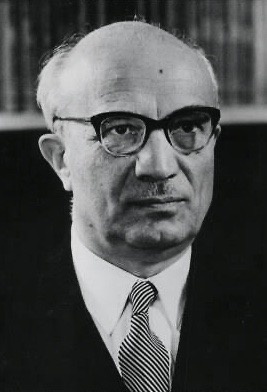
Amintore Fanfani was an Italian politician and statesman, who served as 32nd prime minister of Italy for five separate terms. He was one of the best-known Italian politicians after the Second World War and a historical figure of the left-wing faction of Christian Democracy. He is also considered one of the founders of the modern Italian centre-left.
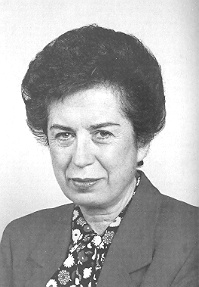
Rosa Russo Iervolino is an Italian politician.

Francesco de Martino was an Italian jurist, politician, lifetime senator (1991–2002) and former Vice President of the Council of Ministers. He was considered by many to be the conscience of the Italian Socialist Party.

The Legislature I of Italy was the 1st legislature of the Italian Republic, and lasted from 8 May 1948 until 24 June 1953. Its composition was the one resulting from the general election of 18 April 1948.

The Legislature II of Italy was the 2nd legislature of the Italian Republic, and lasted from 25 June 1953 until 11 June 1958. Its composition was the one resulting from the general election of 7 June 1953.

The Legislature III of Italy was the 3rd legislature of the Italian Republic, and lasted from 12 June 1958 until 15 May 1963. Its composition was the one resulting from the general election of 25 May 1958.

The Legislature V of Italy was the 5th legislature of the Italian Republic, and lasted from 5 June 1968 until 24 May 1972. Its composition was the one resulting from the general election of 19 May 1968.
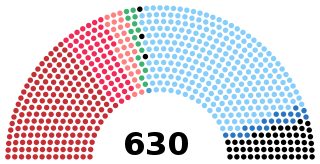
The Legislature VI of Italy was the 6th legislature of the Italian Republic, and lasted from 25 May 1972 until 4 July 1976. Its composition was the one resulting from the general election of 7 May 1972.

The Legislature VII of Italy was the 7th legislature of the Italian Republic, and lasted from 5 July 1976 until 19 June 1979. Its composition was the one resulting from the general election of 20 June 1976.

The Legislature VIII of Italy was the 8th legislature of the Italian Republic, and lasted from 20 June 1979 until 11 July 1983. Its composition was the one resulting from the general election of 3 June 1979.

The Legislature IX of Italy was the 9th legislature of the Italian Republic, and lasted from 12 July 1983 until 1 July 1987. Its composition was the one resulting from the general election of 26 and 27 June 1983. The election was called by President Sandro Pertini one year before the previous legislature's natural end on 5 May 1983, after a crisis in the incumbent government majority (Pentapartito).
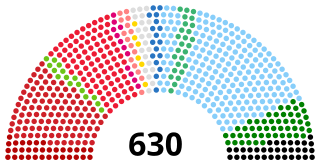
The Legislature XI of Italy was the 11th legislature of the Italian Republic, and lasted from 23 April 1992 until 14 April 1994. Its composition was the one resulting from the general election of 5 and 6 April 1992. The election was called by President Cossiga on 3 February 1992.

The Legislature XII of Italy lasted from 15 April 1994 until 8 May 1996. Its composition was the one resulting from the snap general election of 27 March 1994. The election was called by President Scalfaro, after he dissolved the houses of Parliament on 16 January 1994. This decision was connected to some major events that permanently changed the shape of Italian internal politics during the beginning of the '90s, such as Tangentopoli and the Mafia trials.

The Legislature XIII of Italy lasted from 9 May 1996 until 29 May 2001. Its composition was the one resulting from the general election of 21 April 1996. The election was called by President Scalfaro after the technocratic government of Lamberto Dini lost its support in the Parliament in 1995. President Scalfaro dissolved the houses of Parliament on 16 February 1996. The legislature ended after completing its five-year-long natural course, when President Ciampi dissolved the houses on 8 March 2001.

Gianuario (Ariuccio) Carta, was an Italian politician of the Christian Democracy political party.

Anna Gabriella Ceccatelli, known as Gabriella, was an Italian politician.

The Legislature XV of Italy started on 28 April 2006 and ended on 28 April 2008. Its composition resulted from the election of 9–10 April 2006, called after President Ciampi dissolved the houses on 11 February 2006, at the end of the previous legislature. This legislature was the second shortest in the history of the Italian Republic, lasting exactly two years, and ending when President Giorgio Napolitano dissolved the houses on 6 February 2008, after a vote of no confidence on the incumbent Prodi Cabinet.

The Legislature XIV of Italy started on 30 May 2001 and ended on 27 April 2006. Its composition resulted from the general election of 13 May 2001. The election was called by President Ciampi, after he dissolved the houses of Parliament on 8 March 2001. The legislature ended after its natural course of five years, soon after the houses were dissolved again by Ciampi on 11 February 2006.
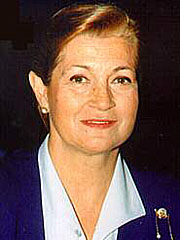
Carla Mazzuca Poggiolini is a professional journalist and Italian politician who served in both chambers of the Italian Parliament. She is the wife of Danilo Poggiolini.

Paolo Cabras was an Italian politician and surgeon.
























